|
See
Research Projects |
|
|
Our research was featured in the following journals: |
|
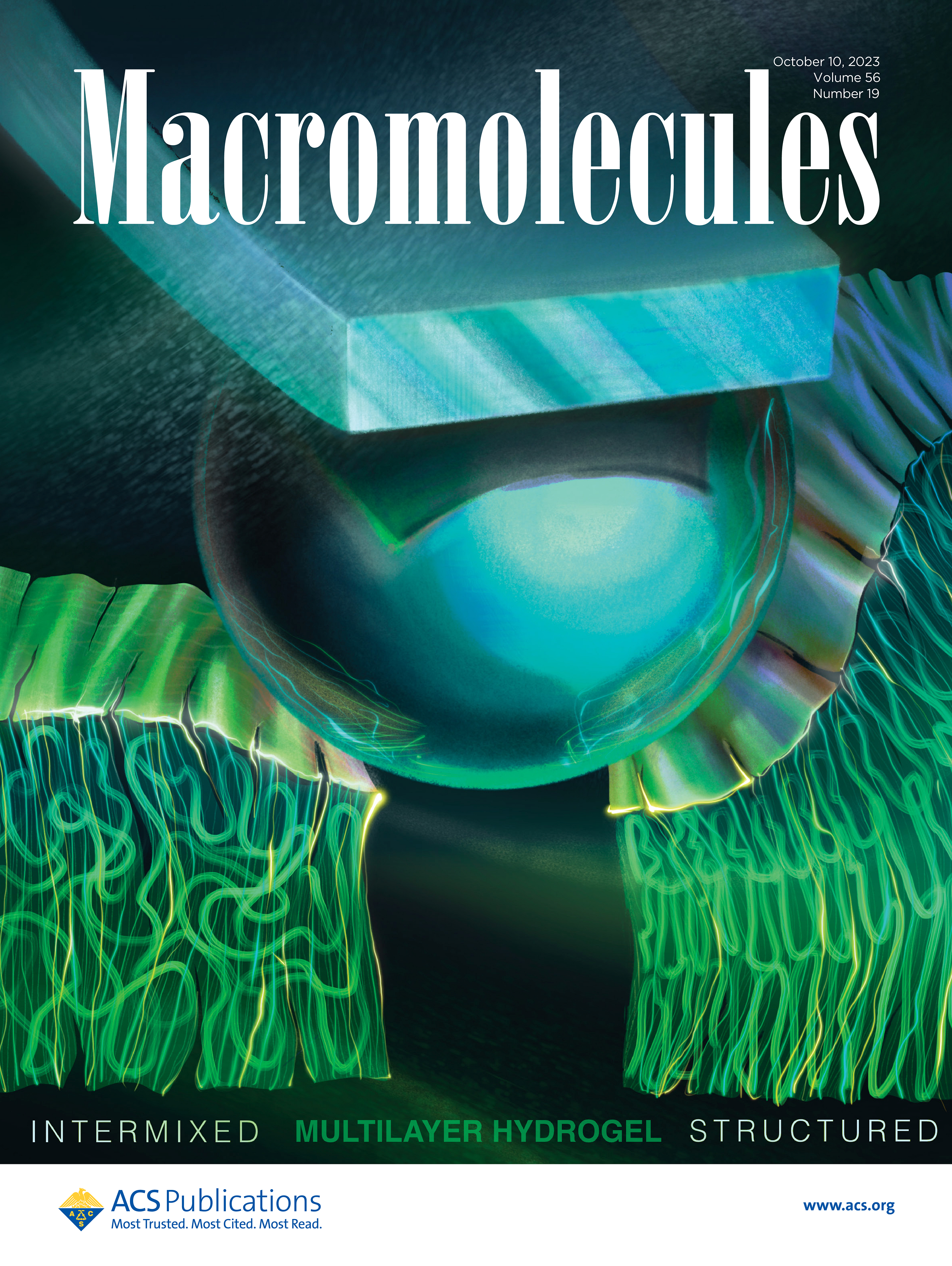 |
The mechanical properties and swelling of thin
poly(methacrylic acid) (PMAA) multilayer hydrogels are
controlled by the internal organization of the PMAA network,
which in turn is regulated by the molecular weight of a
sacrificial multilayer component.
Macromolecules 2023, 56, 8054-8068. |
|
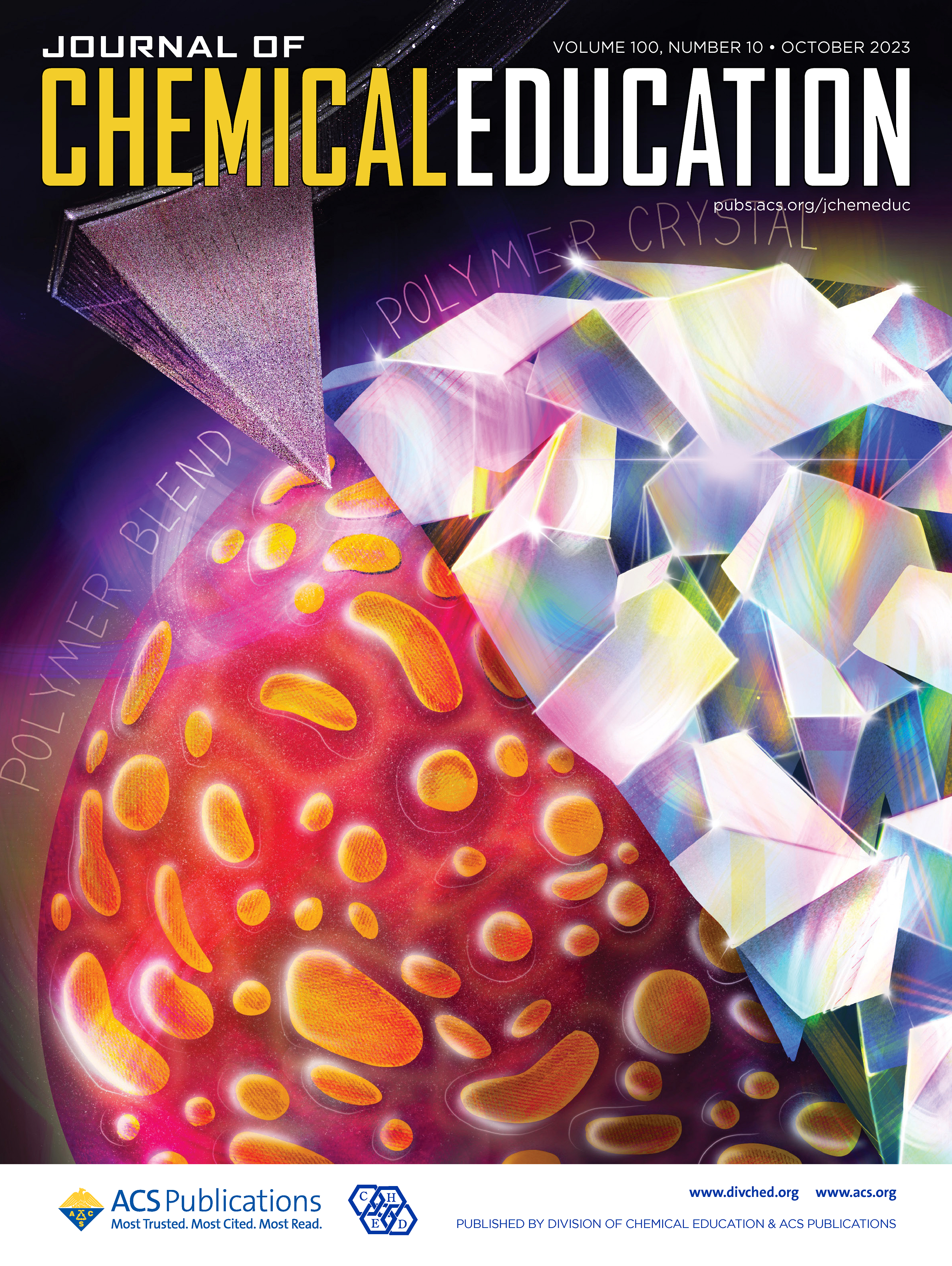 |
A laboratory experiment has been designed
to study physical characteristics of
immiscible polymer blends and crystals, including optical
microscopy and atomic force microscopy analyses of surface
morphology, Young's modulus, deformation, and stiffness.
Journal of Chemical Education 2023,
100, 4047-4055. |
|
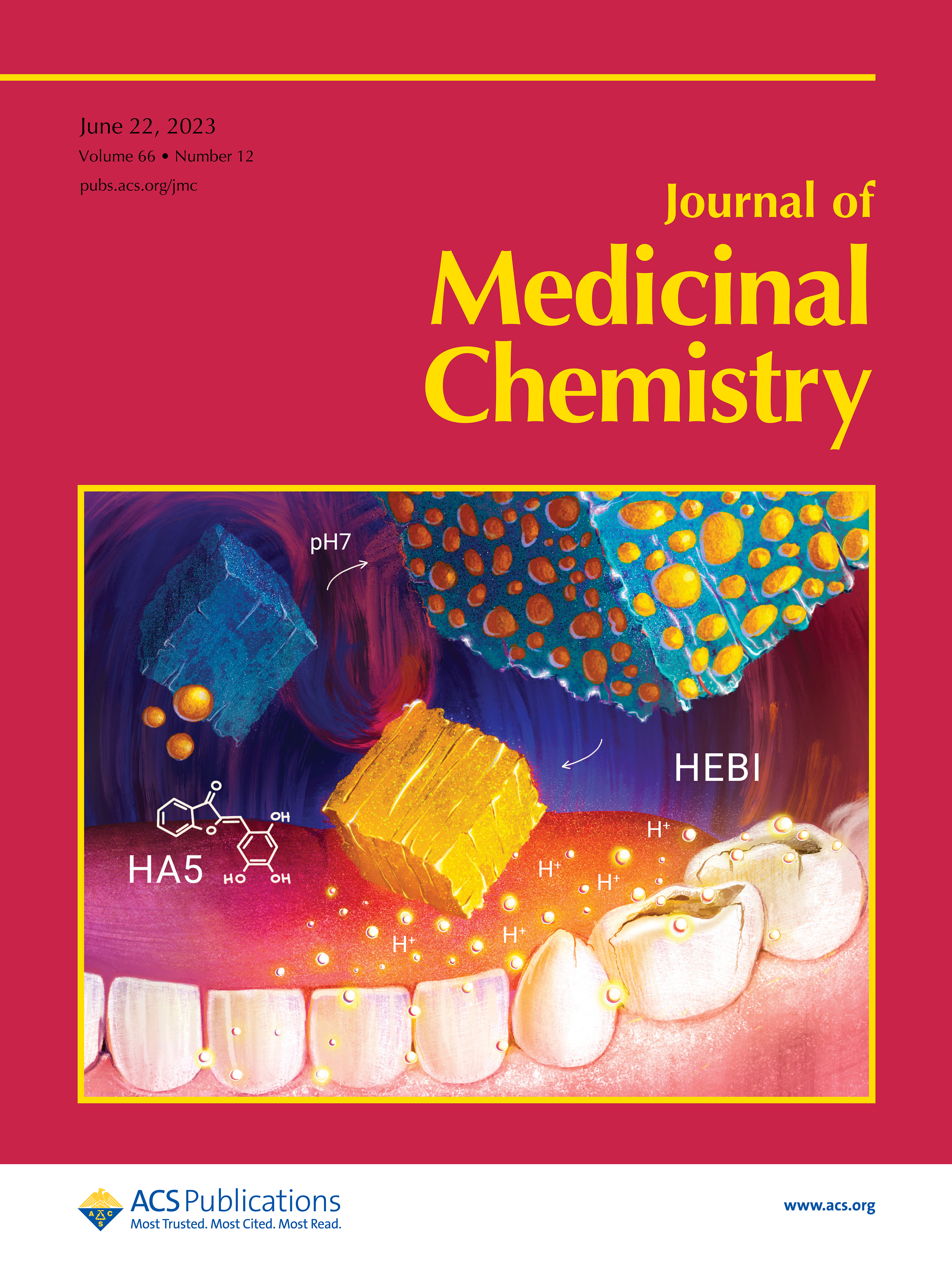 |
Hydrogel encapsulated biofilm inhibitors (HEBI) generated
by encapsulating biofilm inhibitors in hydrogel have the
potential to deliver a novel treatment approach for dental
caries. HEBI selectively inhibits pathogenic biofilms from
Streptococcus mutans in a pH-responsive manner without
affecting the growth and biofilm of the oral commensal bacteria.
Journal of Medicinal Chemistry 2023,
66, 7909-7925. |
|
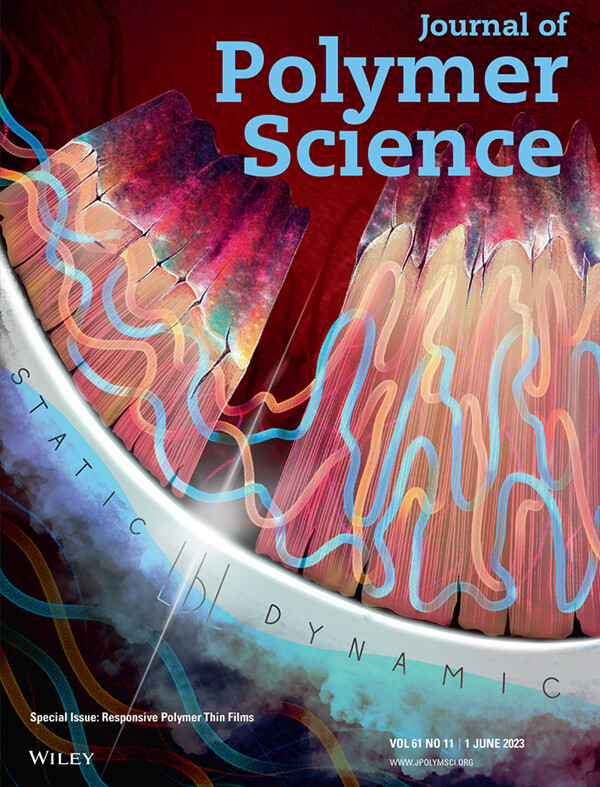 |
The dynamic assembly of the hydrogen-bonded multilayers of
(poly(N-vinylpyrrolidone/poly(methacrylic acid)) leads to much
faster deposition of planar films with larger thickness and
roughness compared to the static films. The release of the
multilayer films into a solution as free-standing planar
membranes or multilayer capsules results in the molecular chain
rearrangements leading the thickness of the dynamic multilayers
to be reduced.
Journal of Polymer Science 2023, 61,
1052-1064. |
|
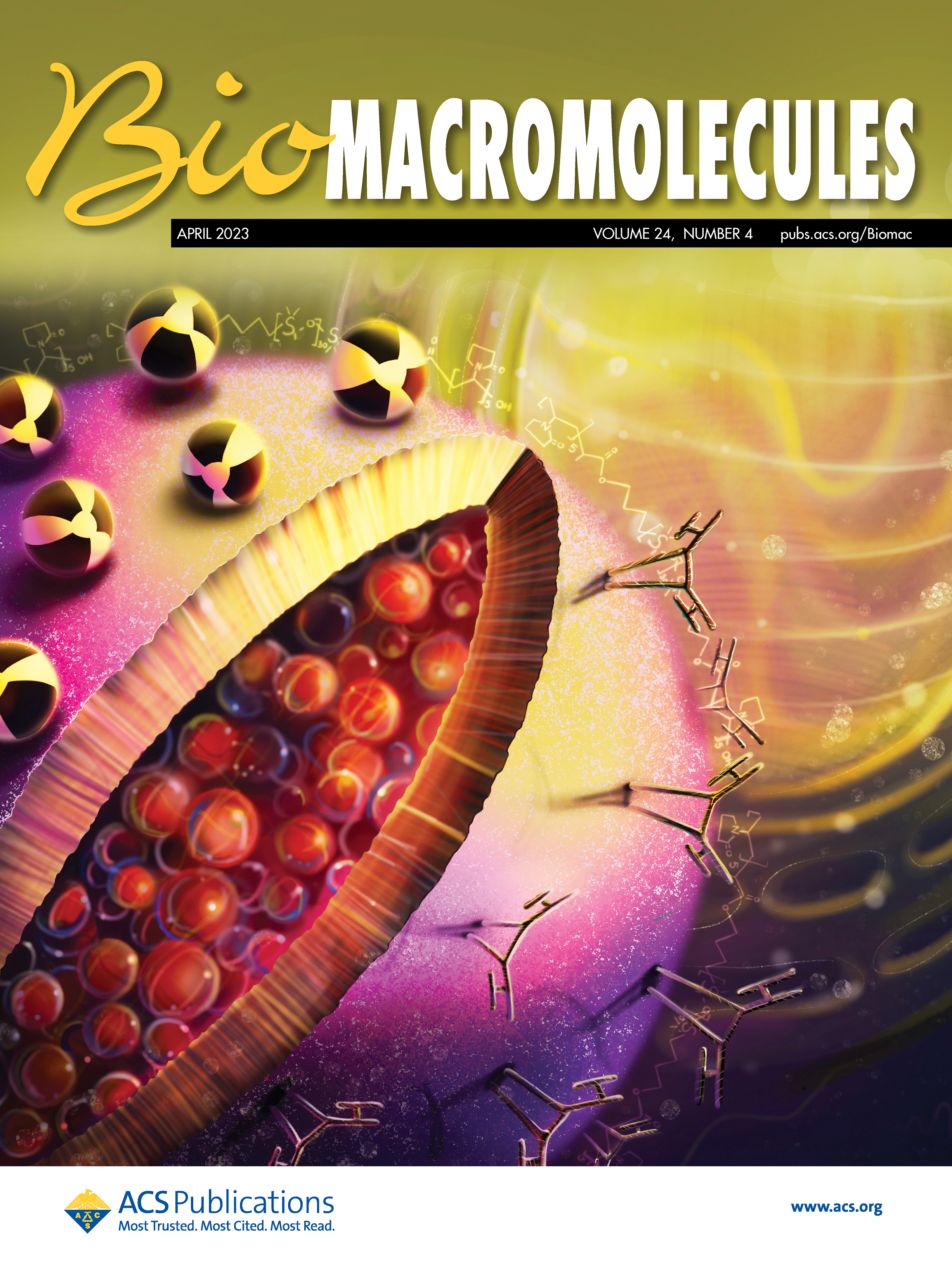 |
89Zr-labeled 60 nm polymersomes
are developed through chelator-free radiolabeling. The
polymersomes are assembled from triblock copolymers followed by
adsorption of a degradable tannin,
tannic acid, on the polymersome surface. A noncovalent anchoring
of recombinant humanized monoclonal antibody, trastuzumab, to
the polymersome membrane allows quick integration of targeting
proteins.
Biomacromolecules 2023, 24,
1784-1797.
|
|
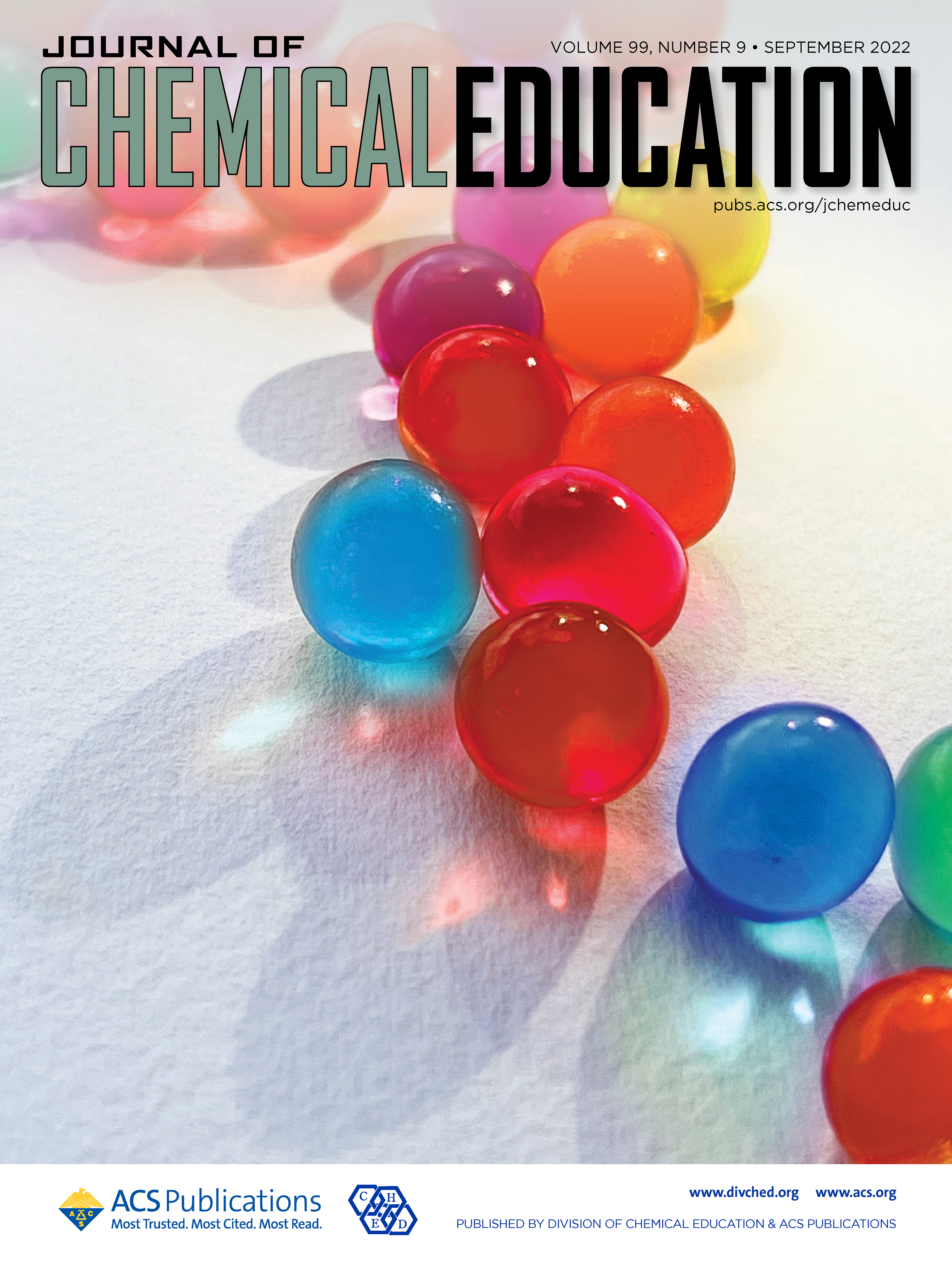 |
A laboratory experiment has been developed as a two-module
research project using easy-to-make alginate gel particles as a
platform to study the structure–property relationships relevant
to controlled drug delivery, colloidal chemistry, and polymer
materials characterization.
J. Chem. Educ. 2022, 99, 9, 3289-3297. |
|
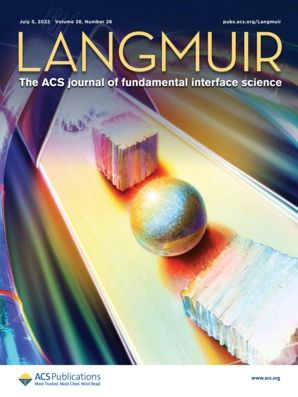 |
The recent advent of multilayer hydrogels based on polymer
layer-by-layer self-assembly opens new possibilities for
creating hierarchically structured 2D and 3D nanothin networks.
Stimuli-responsive polymers have been utilized to create pH- and
temperature-responsive hydrogels that can modify their
dimensions and physical properties in response to external
triggers and have been demonstrated to be essential for
controlled therapeutic delivery and sensing.
Langmuir 2022, 38, 7867-7888. |
|
 |
We developed theranostic polymeric vesicles (polymersomes)
for delivery of small functional molecules and PARP1 siRNA to
breast cancer tumors. These biodegradable, nonionic
nanovesicles, capable of the efficient encapsulation and
delivery of PARP1 siRNA, successfully knock down PARP1 in vivo
and, thus, can provide an advanced platform for the development
of breast cancer gene therapy.
ACS Appl. Bio Materials 2022,
5,4, 1670-1682. |
|
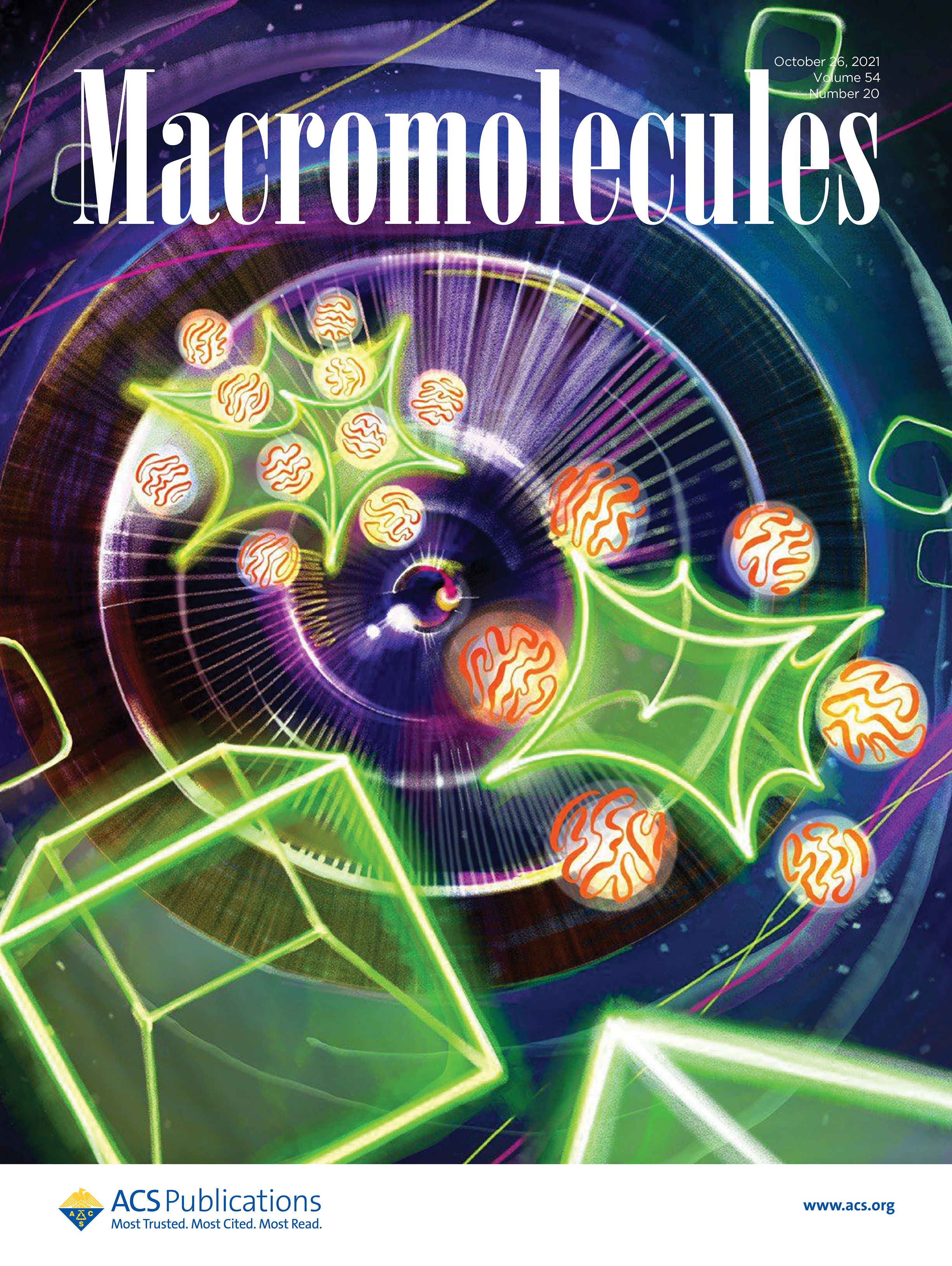 |
Cubical poly(methacrylic acid) hydrogel capsules
completely and reversibly collapse in response to osmotic
pressure differences induced by poly(styrene sulfonate sodium
salt). The capsule deformation alongside the cubical faces
through inward face buckling is investigated using optical
fluorescence microscopy.
Macromolecules 2021, 54, 9712. |
|
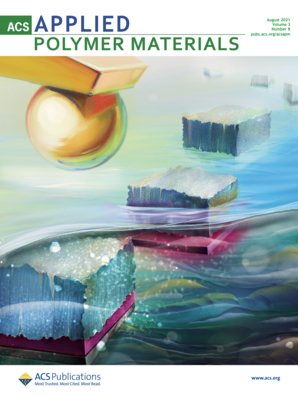 |
Free-floating nano-thin layer-by-layer hydrogen-bonded
poly(methacrylic acid)/poly(N-vinylpyrrolidone)
(PMAA/PVPON) films and (PMAA) hydrogels were obtained via the
dissolution of a sacrificial SiO2 layer. Atomic force
microscopy analysis of mechanical properties and morphology of
free-standing films in dry and hydrated states showed no damage
compared to the original properties of the films. Furthermore,
mechanical properties of (PMAA) hydrogels were significantly
enhanced through reinforcement with Zr(IV) ions.
ACS Appl. Polym. Mater. 2021, 3, 3960. |
|
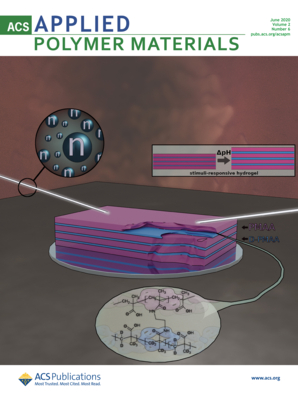 |
We quantified the extent of layer interdiffusion in
hydrogen-bonded films and upon their subsequent cross-linking
and hydration. Internal polymethacrylic acid hydrogel
architecture was monitored by neutron reflectometry using
deuterated marker layers. We found that even in the highly
stratified spin-assisted hydrogen-bonded films, layer
interdiffusion extends over three bilayers. Film cross-linking
induces marker layer interpenetration more deeply into the
surrounding material, extending over five layers. Hydrated
hydrogels preserve well-organized layering and exhibit a
persistent differential swelling with two distinct swelling
ratios corresponding to cross-link-rich and cross-link-poor
strata.
ACS Appl. Polym. Mater. 2020, 2,
2260. |
|
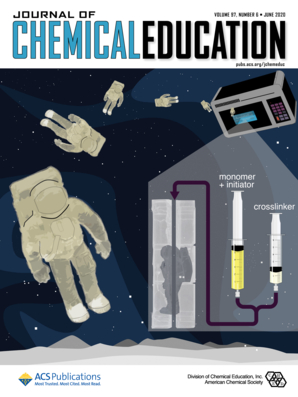 |
In this multipart laboratory experiment, free-standing
hydrogel figurines are synthesized as replicas of student
objects by first creating negative templates in thermally cured
poly(dimethylsiloxane) molds, followed by simultaneous
photopolymerization and cross-linking of poly(N-vinylpyrrolidone)/poly(ethylene
glycol) diacrylate in the molds using a UV cross-linking device.
J. Chem. Educ.
2020,
97, 1637. |
|
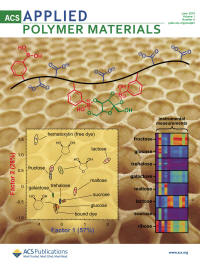 |
Herein,
we report on a water-soluble poly(methacrylic acid)-co-3-(acrylamido)phenylboronic
acid copolymer as a supramolecular receptor. An indicator
displacement assay including oxidized hematoxylin dye was used
to study the interaction of the the copolymer with
monosaccharides (e.g., fructose, glucose, galactose, and ribose)
and disaccharides (e.g., lactose, maltose, sucrose, and
trehalose). Data interpretation using linear discriminant
analysis confirmed that the copolymer-dye complex successfully
differentiated both monosaccharides and disaccharides in neutral
aqueous solution. This system demonstrates the enhanced
affinity and water solubility for future biological and
environmental applications.
ACS Appl. Polym. Mater. 2019, 1,
1341. |
|
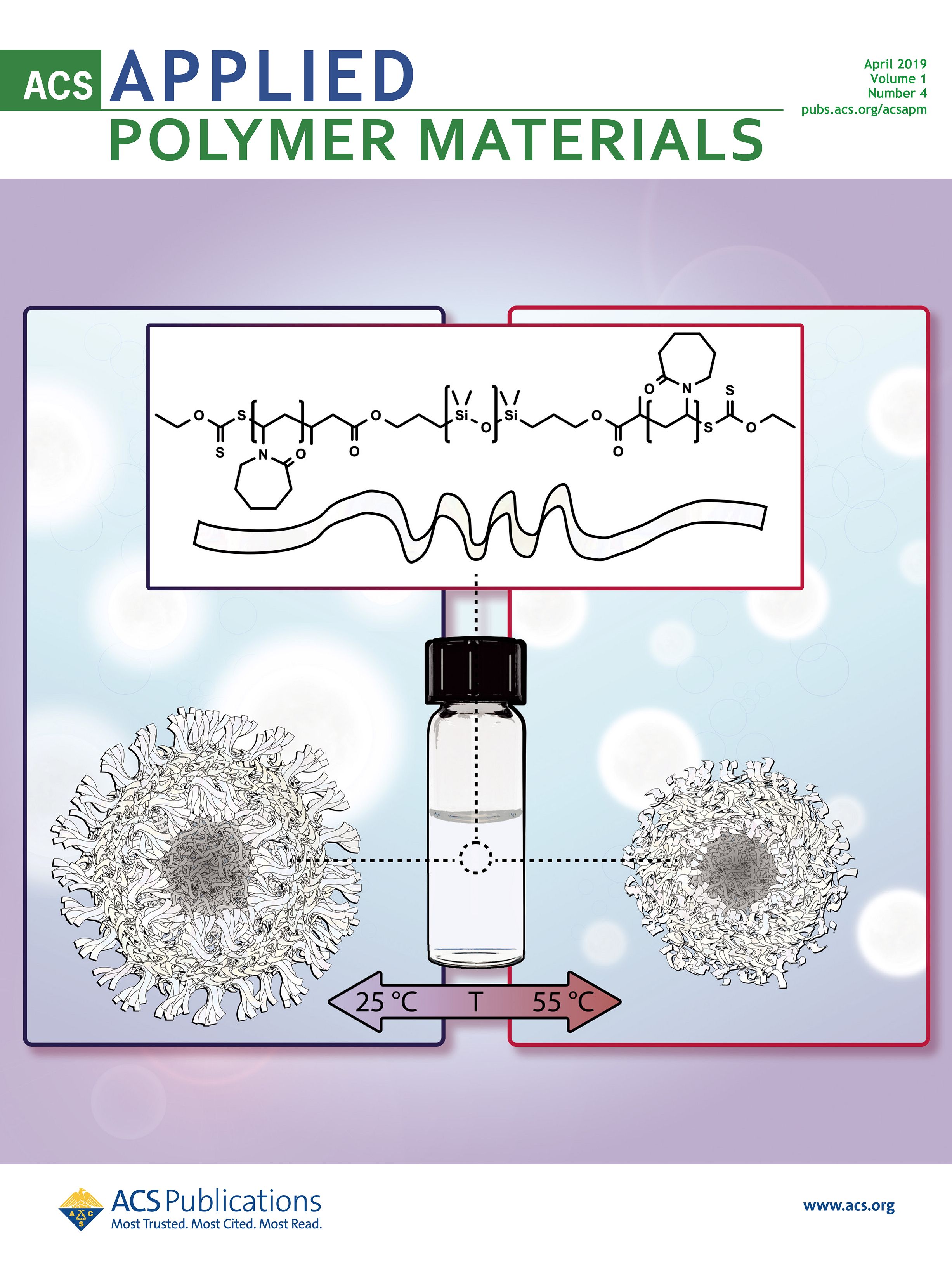 |
Nanosized polymeric vesicles (polymersomes) assembled from ABA
triblock copolymers of poly(N-vinylcaprolactam)-poly(dimethylsiloxane)-poly(N-vinylcaprolactam)
(PVCL–PDMS–PVCL) are a promising platform for biomedical
applications, as the temperature-responsiveness of the PVCL
blocks enables reversible vesicle shrinkage and permeability of
the polymersome shell at elevated temperatures. These smart
vehicles may open the door to future controlled delivery
applications, where precise temperature controlled gating of the
carrier permeability is necessary.
ACS Appl. Polym. Mater. 2019, 1, 722. |
|
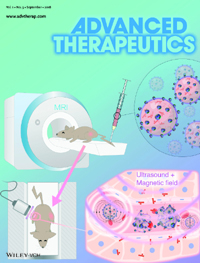 |
We demonstrate ultrasound-triggered
drug release from MRI-visible polymeric microcapsules. Iron
oxide nanoparticles are attached to the macrocapsules which
provide imaging contrast rivaling commercial contrast agents at
a fraction of the matal concentration. The encapsulated drug is
selectively released through ultrasound irradiation with
minimized off-target uptake in vivo. Adv. Therapeutics 2018,
1, 1800051. |
|
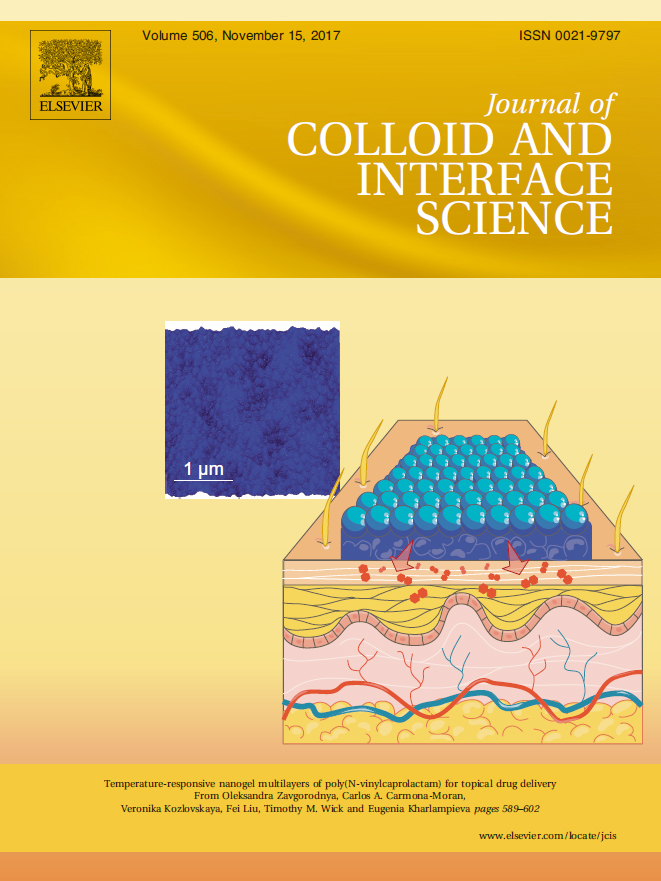 |
We show nanothin
temperature-responsive hydrogel films of
poly(N-vinylcaprolactam) nanoparticles (νPVCL) loaded with a
non-steroidal anti-inflammatory drug used for osteoarthritis
pain management can provide sustained permeation of the drug
through an artificial skin for 24 h at the average human skin
temperature.
J. Colloid Interface Sci. 2017,
506, 589. |
|
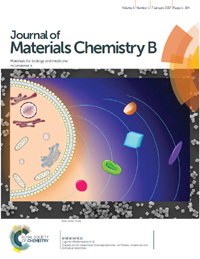 |
This review summarizes a pool of current
experimental approaches and discuss perspectives in the
development of the synergistic combination of shape and
stimuli-response in particulate hydrogels. The paper
discusses the effects of shape on the physiochemical properties
of the particles and their shape-regulated biological
interactions. J.
Mater. Chem. B, 2017, 5, 9. |
|
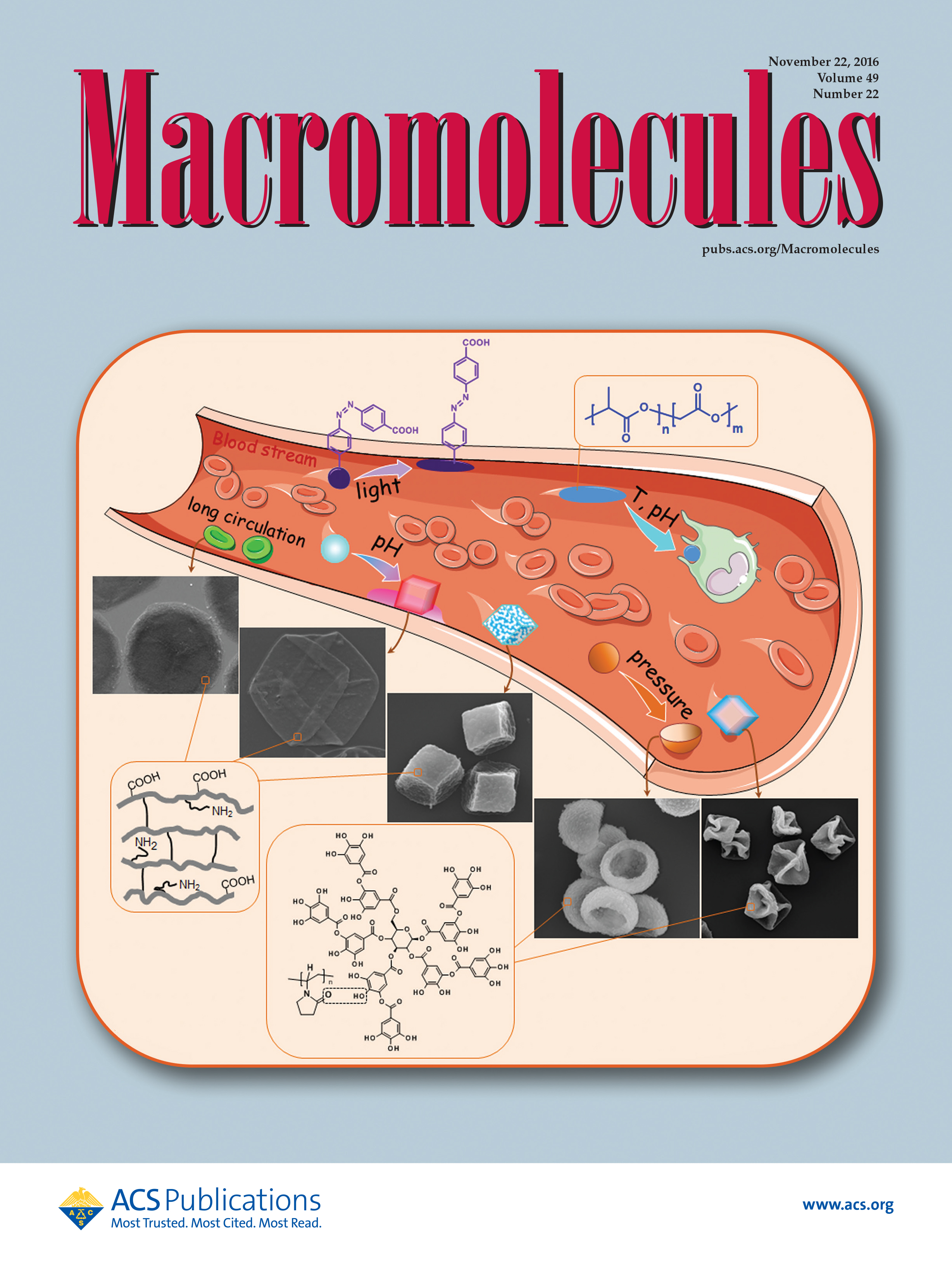 |
This Perspective highlights recent
developments in the field of polymer particulates such as solid
particles, micelles, hydrogels, and templated multilayer systems
that undergo shape changes under various stimuli. The
fundamental issues related to the design and shape-adaptable
properties of both spherical and nonspherical particles are
discussed as well as their prospective applications in
controlled drug delivery. Macromolecules
2016, 49(22), 8373. |
|
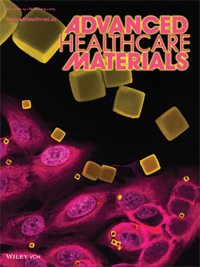 |
Spherical and cubical microcapsules
were made via layer-by-layer assembly of hydrogen-bonded tannic
acid/poly(N-vinylpyrrolidone)
(TA/PVPON) as hollow polymer shells.
Cubical geometry promotes more efficient interaction of capsules
with breast cancer cells, while elasticity prevents engulfment
by phagocytic cells in the tumor microenvironment. Adv.
Healthcare Mater. 2015, 4, 2657. |
|
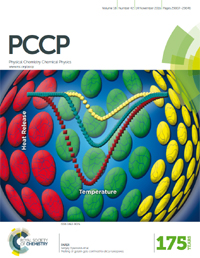 |
Nanoconfinement is a way to create
materials whose properties differ from the bulk. For the first
time, this research explores the effect of nanoconfinement on
the thermodynamics and kinetics of gel melting.
Physical Chemistry Chemical Physics, 2016, 18,
29056. |
|
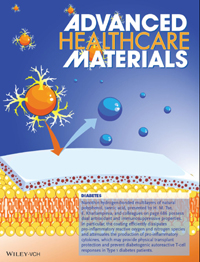 |
Hydrogen-bonded multilayers of
natural polyphenol efficiently dissipate pro-inflammatory reactive oxygen and nitrogen
species
and attenuate the production of pro-inflammatory
cytokines, which may provide physical pancreatic islet transplant protection and
prevent
diabetogenic autoreactive T-cell responses in Type 1 diabetes
patients. Adv.
Healthcare Mater. 2015, 4, 686. |
|
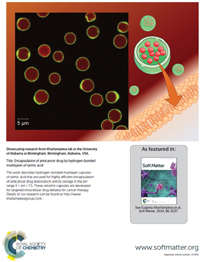 |
This work describes hydrogen-bonded
multilayer capsules of tannic acid that are used for highly
efficient encapsulation of anticancer drug doxorubicin and its
storage in the pH range 5 < pH < 7.5. These ultrathin capsules
are developed for targeted intracellular drug delivery for
cancer therapy. Soft
Matter, 2014, 10, 9237. |
|
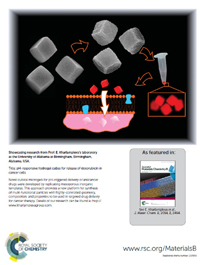 |
Novel cubical microgels for
pH-triggered delivery of anticancer drugs were developed by
replicating mesoporous inorganic templates. This approach
provides a new platform for synthesis of multi-functional
particles with highly-controlled geometry, composition, and
properties to be used in targeted drug delivery for cancer
therapy J. Mater.
Chem. B, 2014, 2, 2494. |
|
|
Our Group in the news: |
|
|
- Picture a Scientist: UAB edition
(UAB Reporter, March 8, 2021)
- Controlled Drug-delivery
microcapsules tagged with zirconium-89 (Medicine Innovates in
Diagnostics, 2021)
|
|
- Drug-delivery microcapsules tagged
with zirconium-89 can be tracked by PET imaging (UAB News, Jan
20, 2021) |
|
- Chemistry in Pictures: A sponge for
scrubbing the environment (C&EN, Dec 24, 2020) |
|
- Type 1 diabetes: Tannic acid
encapsulation protects transplanted islets from rejection (UAB
News, Oct
22, 2020) |
|
- Atomic Force Microscope Awarded to
UAB (Dec 16, 2019) |
|
- The shape of things to come (UAB
Magazine, May 2019) |
|
- Eugenia Kharlampieva appointed as Co-Director of CNMB (May
6, 2019) |
|
-
Federal grant will support interdisciplinary materials science
graduate students (UAB News, Nov 19, 2018) |
|
- Innovators honored for
contributions to research, entrepreneurship (UAB Reporter, Oct
29, 2018) |
|
- William Higgins receives Department
of Energy graduate student award (UAB News, May 11, 2018) |
|
- They Persisted (UAB Arts and Science Magazine, April, 4, 2018) |
|
- Neutrons Reveal Promising
Properties of Novel Antioxidant Polymer (ORNL News, Feb 26,
2018) |
|
-
NSF News From the Field (Jan 30,
2018) |
|
- Microcapsules gain a new power -
scavenging reactive oxygen species (UAB News, Jan 30, 2018) |
|
- Active drug-delivery system addresses the limitations seen for
the anti-cancer drug BA-TPQ - poor solubility and low
bioavailability (Eurekalert!
American Association for the Advancement of Science,
June 28, 2017) |
|
- Micron-sized hydrogel cubes show
highly efficient delivery of a potent anticancer drug (UAB News,
June 28, 2017) |
- UAB creates triple-threat
cancer-fighting polymer capsules for guided drud delivery (UAB
News, March 30, 2017 and
the NSF news) |
|
-
Dr. Kharlampieva's interview on the
ACS Polymer Science monthly podcast series on shape-adaptable
polymeric particles for controlled delivery (ACS Publications, Dec, 2016) |
|
- Detecting pollutants in Gulf Coast
marine ecosystems (UAB News, Dec 6, 2016) |
|
- Stealth pig cells may hold the key
to treating diabetes in humans (UAB News, Sept 7, 2016) |
|
- Changes in shape and 'squishiness'
can help drug-containing microcapsules reach tumors (UAB News,
Feb 12, 2016) |
|
- Attacking cancer with tiny, squishy
balls and cubes (UAB News, Feb 11, 2016) |
|
- Our work on cubical multilayer
capsules was featured by Federation of American Societies for
Experimental Biology (FASEB) (Dec, 2015) |
|
- Kharlampieva Named President of UAB
Sigma Xi Chapter (UAB News, Oct 21, 2015) |
|
- Kharlampieva focuses on
shape-shifting research for drug delivery (UAB Reporter, April 10, 2014) |
|
- Curing diabetes, with a little help
from polymer science: coating could make widespread treatment a
reality (Materials Views, May 18, 2012) |
|
-
New coating for pancreatic islets may
offer new hope for diabetics (UAB News, May 31, 2012) |
|
-
Promise of novel drug-delivery
systems that can invade tumors to be explored (UAB
Reporter, March 16, 2012) |
|
|
-
UAB experts work on oil-spill
recovery, disaster prevention (UAB News, April 20,
2012) |
|
|
-
Small World: UAB
Researchers Build the Nanoscale Future (UAB Magazine, October
2011) |
|
|
|
|
|
|
|
|
|